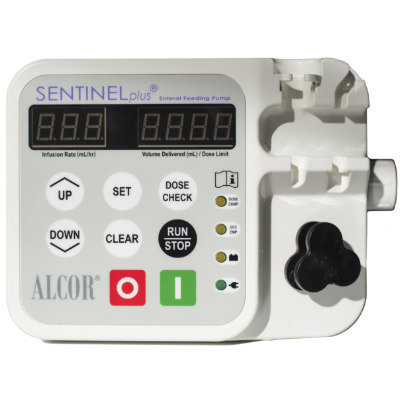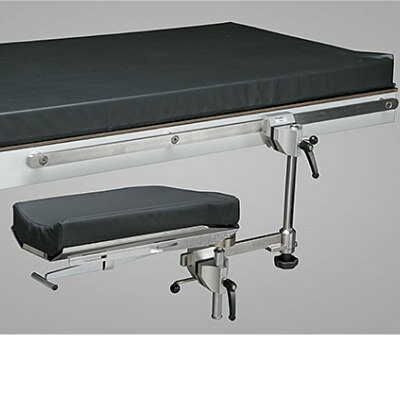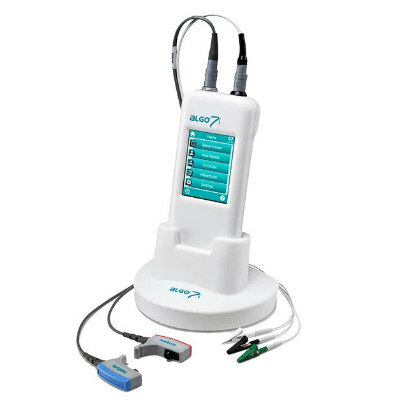Battery-Free, AI-Enabled Sensor Patch Measures Biomarkers to Monitor Wound Healing Status 
|
By HospiMedica International staff writers Posted on 28 Jun 2023 |

Effective and timely monitoring of the wound-healing process is crucial in wound care and management. Issues with wound healing, like chronic wounds (those that don't heal after three months) and post-burn pathological scars, can lead to life-threatening complications and substantial financial strain on patients and global healthcare systems. Wound healing is traditionally assessed visually by a clinician, and wound infections are mostly identified through swabbing and subsequent bacterial cultures. This method involves extended waiting times and does not provide immediate wound diagnosis, making accurate wound healing predictions difficult in a clinical setting. Furthermore, the frequent removal of dressings for wound assessment increases the risk of infection and can cause additional discomfort and trauma to patients. To overcome this challenge, a research team integrated their expertise in flexible electronics, artificial intelligence (AI), sensor data processing, and nanosensor capabilities to develop an innovative solution that could benefit patients with complicated wound conditions.
A sensor patch invented by a team of researchers from the National University of Singapore (NUS, Singapore) and A*STAR's Institute of Materials Research and Engineering (IMRE, Singapore) offers a simple, efficient, and convenient way to monitor wound healing, thereby facilitating timely clinical intervention to enhance wound care and management. The PETAL (Paper-like Battery-free In situ AI-enabled Multiplexed) sensor patch contains five colorimetric sensors and can assess the patient's wound healing status within 15 minutes by measuring a combination of biomarkers such as temperature, pH, trimethylamine, uric acid, and wound moisture. These biomarkers were specifically chosen to effectively evaluate wound inflammation, infection, and the wound environment's condition.
Unlike the majority of wearable wound sensors that measure only one or a few parameters and require bulky circuit boards and batteries, the PETAL sensor patch currently measures five biomarkers. Additional biomarkers can be included by integrating different colorimetric sensors, such as glucose, lactate, or Interleukin-6 for diabetic ulcers, if needed. The sensor patch does not require a battery and can function without an energy source. Sensor images are captured by a mobile phone and analyzed by AI algorithms to ascertain the patient's healing status. The PETAL sensor patch consists of a fluidic panel designed like a five-petal pinwheel flower, with each 'petal' serving as a sensing region. An opening in the fluidic panel's center collects wound fluid and distributes it evenly through five sampling channels to the sensing regions for analysis. Each sensing region uses a different color-changing chemical to detect and measure respective wound indicators like temperature, pH, trimethylamine, uric acid, and moisture.
A fluidic panel sandwiched between two thin films comprises a top transparent silicone layer for facilitating normal skin functions of oxygen and moisture exchange and enables image display for accurate image capture and analysis. The bottom layer, in contact with the wound, gently affixes the sensor patch to the skin, protecting the wound bed from direct contact with the sensor panel to minimize disruptions to wound tissue. Once sufficient wound fluid is collected, the PETAL sensor patch can detect biomarkers within 15 minutes. Images or a video of the sensor patch can be recorded on a mobile phone for classification using a proprietary AI algorithm. Lab experiments have demonstrated a high accuracy rate of 97% of the PETAL sensor patch in differentiating between healing and non-healing chronic and burn wounds. There were no visible signs of adverse reactions observed on the skin surface in contact with the PETAL sensor patch over four days, attesting to the biocompatibility of the PETAL sensor patch for outpatient wound monitoring.
"We designed the paper-like PETAL sensor patch to be thin, flexible and biocompatible, allowing it to be easily and safely integrated with wound dressing for the detection of biomarkers,” explained Dr. Su Xiaodi, Principal Scientist, Soft Materials Department, A*STAR's IMRE. “We can thus potentially use this convenient sensor patch for prompt, low-cost wound care management at hospitals or even in non-specialist healthcare settings such as homes."
"Our AI algorithm is capable of rapidly processing data from a digital image of the sensor patch for very accurate classification of healing status,” said NUS Associate Professor Benjamin Tee. “This can be done without removing the sensor from the wound. In this way, doctors and patients can monitor wounds more regularly with little interruption to wound healing. Timely medical intervention can then be administered appropriately to prevent adverse complications and scarring."
Latest Critical Care News
- Deep-Learning Model Predicts Arrhythmia 30 Minutes before Onset
- Breakthrough Technology Combines Detection and Treatment of Nerve-Related Disorders in Single Procedure
- Plasma Irradiation Promotes Faster Bone Healing
- New Device Treats Acute Kidney Injury from Sepsis
- Study Confirms Safety of DCB-Only Strategy for Treating De Novo Left Main Coronary Artery Disease
- Revascularization Improves Quality of Life for Patients with Chronic Limb Threatening Ischemia
- AI-Driven Prediction Models Accurately Predict Critical Care Patient Deterioration
- Preventive PCI for High-Risk Coronary Plaques Reduces Cardiac Events
- AI Diagnostic Tool Guides Rapid Diagnosis and Prediction of Sepsis
- World's First AI-Powered Sepsis Alert System Detects Sepsis in One Minute
- Smartphone Magnetometer Uses Magnetized Hydrogel to Measure Biomarkers for Disease Diagnosis
- New Technology to Revolutionize Valvular Heart Disease Care
- Super Permeable Wearable Electronics Enable Long-Term Biosignal Monitoring
- New Hydrogel Features Enhanced Capabilities for Treating Aneurysms and Halting Progression
- New AI Tool Predicts Medical Events to Support Clinical Decision-Making in Healthcare Settings
- Bioelectronic Mesh Grows With Cardiac Tissues for Comprehensive Heart Monitoring
Channels
Artificial Intelligence
view channel
AI-Powered Algorithm to Revolutionize Detection of Atrial Fibrillation
Atrial fibrillation (AFib), a condition characterized by an irregular and often rapid heart rate, is linked to increased risks of stroke and heart failure. This is because the irregular heartbeat in AFib... Read more
AI Diagnostic Tool Accurately Detects Valvular Disorders Often Missed by Doctors
Doctors generally use stethoscopes to listen for the characteristic lub-dub sounds made by heart valves opening and closing. They also listen for less prominent sounds that indicate problems with these valves.... Read moreSurgical Techniques
view channel
Hydrogel-Based Miniaturized Electric Generators to Power Biomedical Devices
The development of engineered devices that can harvest and convert the mechanical motion of the human body into electricity is essential for powering bioelectronic devices. This mechanoelectrical energy... Read moreWearable Technology Monitors and Analyzes Surgeons' Posture during Long Surgical Procedures
The physical strain associated with the static postures maintained by neurosurgeons during long operations can lead to fatigue and musculoskeletal problems. An objective assessment of surgical ergonomics... Read more.jpg)
Custom 3D-Printed Orthopedic Implants Transform Joint Replacement Surgery
The evolving field of 3D printing is revolutionizing orthopedics, especially for individuals requiring joint replacement surgeries where traditional implants fail to provide a solution. Although most people... Read more
Cutting-Edge Imaging Platform Detects Residual Breast Cancer Missed During Lumpectomy Surgery
Breast cancer is becoming increasingly common, with statistics indicating that 1 in 8 women will develop the disease in their lifetime. Lumpectomy remains the predominant surgical intervention for treating... Read morePatient Care
view channel
Surgical Capacity Optimization Solution Helps Hospitals Boost OR Utilization
An innovative solution has the capability to transform surgical capacity utilization by targeting the root cause of surgical block time inefficiencies. Fujitsu Limited’s (Tokyo, Japan) Surgical Capacity... Read more
Game-Changing Innovation in Surgical Instrument Sterilization Significantly Improves OR Throughput
A groundbreaking innovation enables hospitals to significantly improve instrument processing time and throughput in operating rooms (ORs) and sterile processing departments. Turbett Surgical, Inc.... Read more
Next Gen ICU Bed to Help Address Complex Critical Care Needs
As the critical care environment becomes increasingly demanding and complex due to evolving hospital needs, there is a pressing requirement for innovations that can facilitate patient recovery.... Read moreGroundbreaking AI-Powered UV-C Disinfection Technology Redefines Infection Control Landscape
Healthcare-associated infection (HCAI) is a widespread complication in healthcare management, posing a significant health risk due to its potential to increase patient morbidity and mortality, prolong... Read moreHealth IT
view channel
Machine Learning Model Improves Mortality Risk Prediction for Cardiac Surgery Patients
Machine learning algorithms have been deployed to create predictive models in various medical fields, with some demonstrating improved outcomes compared to their standard-of-care counterparts.... Read more
Strategic Collaboration to Develop and Integrate Generative AI into Healthcare
Top industry experts have underscored the immediate requirement for healthcare systems and hospitals to respond to severe cost and margin pressures. Close to half of U.S. hospitals ended 2022 in the red... Read more
AI-Enabled Operating Rooms Solution Helps Hospitals Maximize Utilization and Unlock Capacity
For healthcare organizations, optimizing operating room (OR) utilization during prime time hours is a complex challenge. Surgeons and clinics face difficulties in finding available slots for booking cases,... Read more
AI Predicts Pancreatic Cancer Three Years before Diagnosis from Patients’ Medical Records
Screening for common cancers like breast, cervix, and prostate cancer relies on relatively simple and highly effective techniques, such as mammograms, Pap smears, and blood tests. These methods have revolutionized... Read morePoint of Care
view channel
Critical Bleeding Management System to Help Hospitals Further Standardize Viscoelastic Testing
Surgical procedures are often accompanied by significant blood loss and the subsequent high likelihood of the need for allogeneic blood transfusions. These transfusions, while critical, are linked to various... Read more
Point of Care HIV Test Enables Early Infection Diagnosis for Infants
Early diagnosis and initiation of treatment are crucial for the survival of infants infected with HIV (human immunodeficiency virus). Without treatment, approximately 50% of infants who acquire HIV during... Read more
Whole Blood Rapid Test Aids Assessment of Concussion at Patient's Bedside
In the United States annually, approximately five million individuals seek emergency department care for traumatic brain injuries (TBIs), yet over half of those suspecting a concussion may never get it checked.... Read more
New Generation Glucose Hospital Meter System Ensures Accurate, Interference-Free and Safe Use
A new generation glucose hospital meter system now comes with several features that make hospital glucose testing easier and more secure while continuing to offer accuracy, freedom from interference, and... Read moreBusiness
view channel
Johnson & Johnson Acquires Cardiovascular Medical Device Company Shockwave Medical
Johnson & Johnson (New Brunswick, N.J., USA) and Shockwave Medical (Santa Clara, CA, USA) have entered into a definitive agreement under which Johnson & Johnson will acquire all of Shockwave’s... Read more














